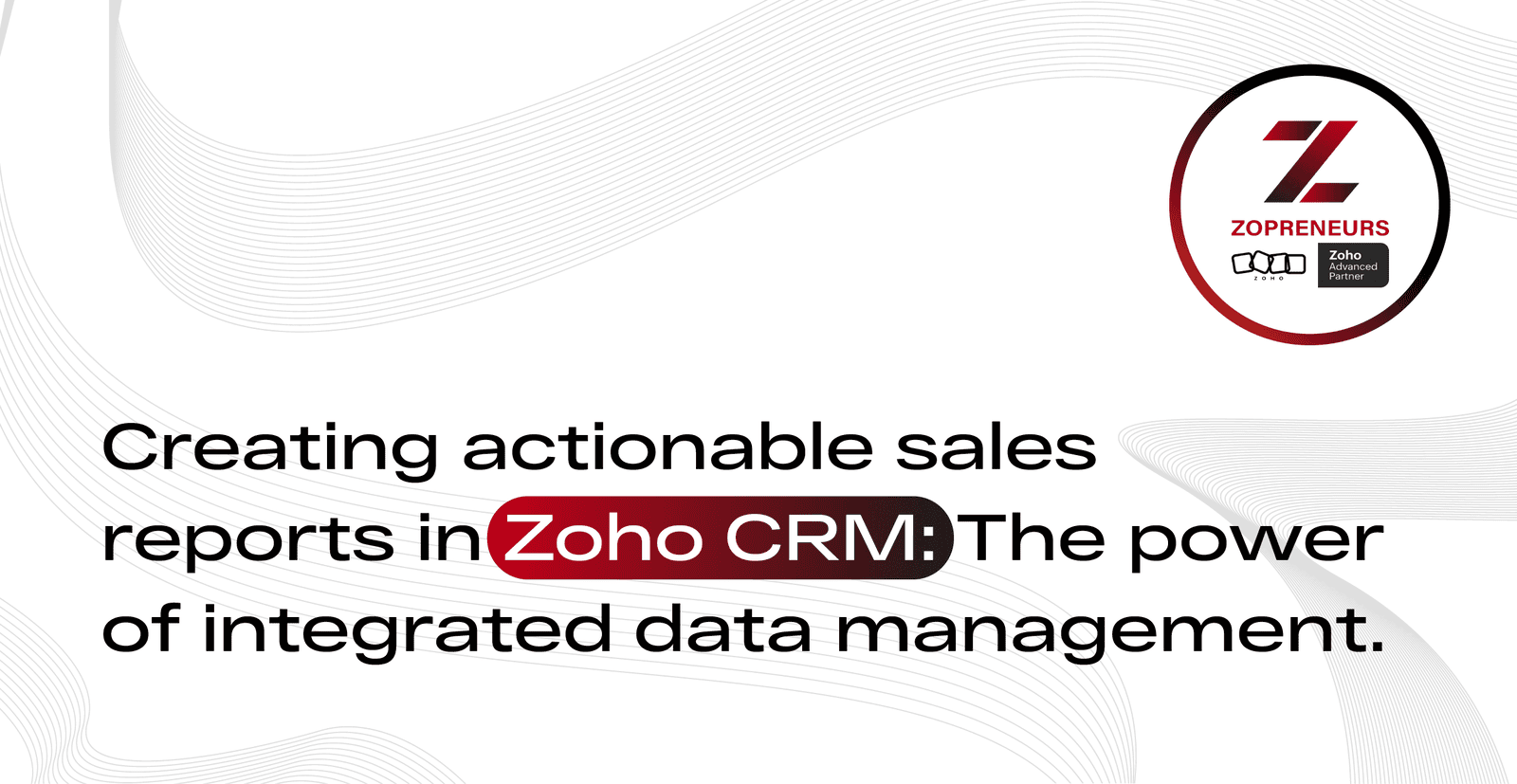
Introduction
In the fast-paced sales environment, precise insights are essential for informed decisions and growth. Creating actionable sales reports in Zoho CRM allows you to turn raw data into valuable insights that guide your strategy.
Here’s how to leverage Zoho CRM’s reporting features to enhance your sales efforts.
1. Understand the Value of Integrated Data Management
Zoho CRM offers a comprehensive suite of tools for managing your sales data. Integrated data management means that all relevant information—from leads and deals to sales activities and customer interactions—is centralised in one system. This integration ensures that your reports are built on a complete and accurate dataset, providing a holistic view of your sales performance.
Key Benefits:
●Unified Data Source: Eliminates discrepancies by consolidating data from various sources.●Real-Time Updates: Ensures that your reports reflect the most current information.Improved Accuracy: Reduces the risk of errors associated with manual data handling.
2. Designing Effective Sales Reports
To create actionable sales reports, start by defining your objectives. What do you want to learn from your reports? Common goals include tracking sales performance, identifying trends, and evaluating the effectiveness of sales strategies.
Tips for Designing Effective Reports:
●Identify Key Metrics: Focus on metrics that align with your sales goals, such as conversion rates, average deal size, and sales cycle length.●Choose the Right Report Type: Zoho CRM offers various report types, including tabular, summary, and matrix reports. Select the type that best suits your needs.●Use Filters and Grouping: Tailor your reports by applying filters and grouping data to highlight specific aspects of your sales performance.
3. Leveraging Zoho CRM’s Reporting Features
Zoho CRM’s reporting tools are designed to help you dig deeper into your data. Here are some features to take advantage of:
●Custom Reports: Create custom reports to track metrics specific to your sales process. Customise fields, add filters, and select the data you want to include.●Dashboards: Visualise your sales data through interactive dashboards. Dashboards provide a snapshot of key metrics and allow you to drill down into specific areas for a closer look.●Automated Reports: Scheduled automated reports ensure that you always have up-to-date information without manual intervention.
4. Analysing and Acting on Your Reports
Once you’ve generated your reports, the next step is to analyse the data and make informed decisions. Here’s how to turn your insights into actions:
●Identify Trends: Look for patterns in your data that indicate strengths and weaknesses in your sales process.●Spot Opportunities: Use your reports to identify high-performing sales reps, successful sales strategies, and areas with potential for growth.●Adjust Strategies: Based on your analysis, adjust your sales strategies to capitalise on strengths and address weaknesses.
Conclusion
The power of Zoho CRM lies in its ability to integrate and manage data, turning it into actionable insights through comprehensive reporting. By harnessing these capabilities, you can gain a deeper understanding of your sales performance, make data-driven decisions, and drive growth. Embrace the potential of integrated data management and transform your sales reports into a strategic asset that propels your business forward.
